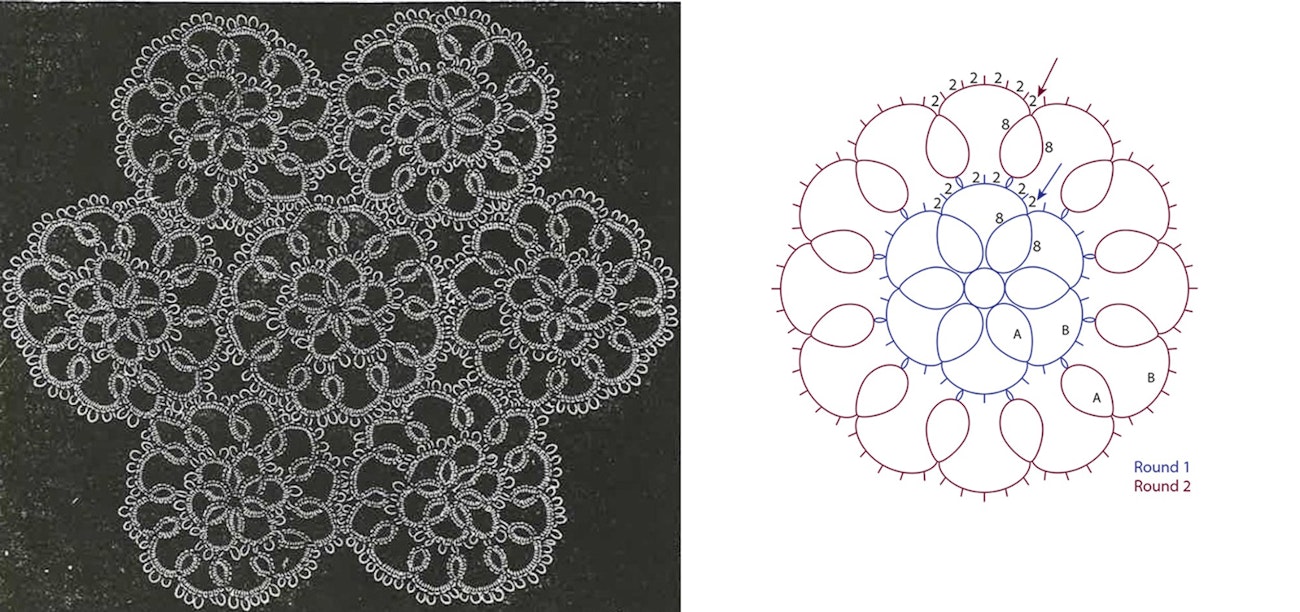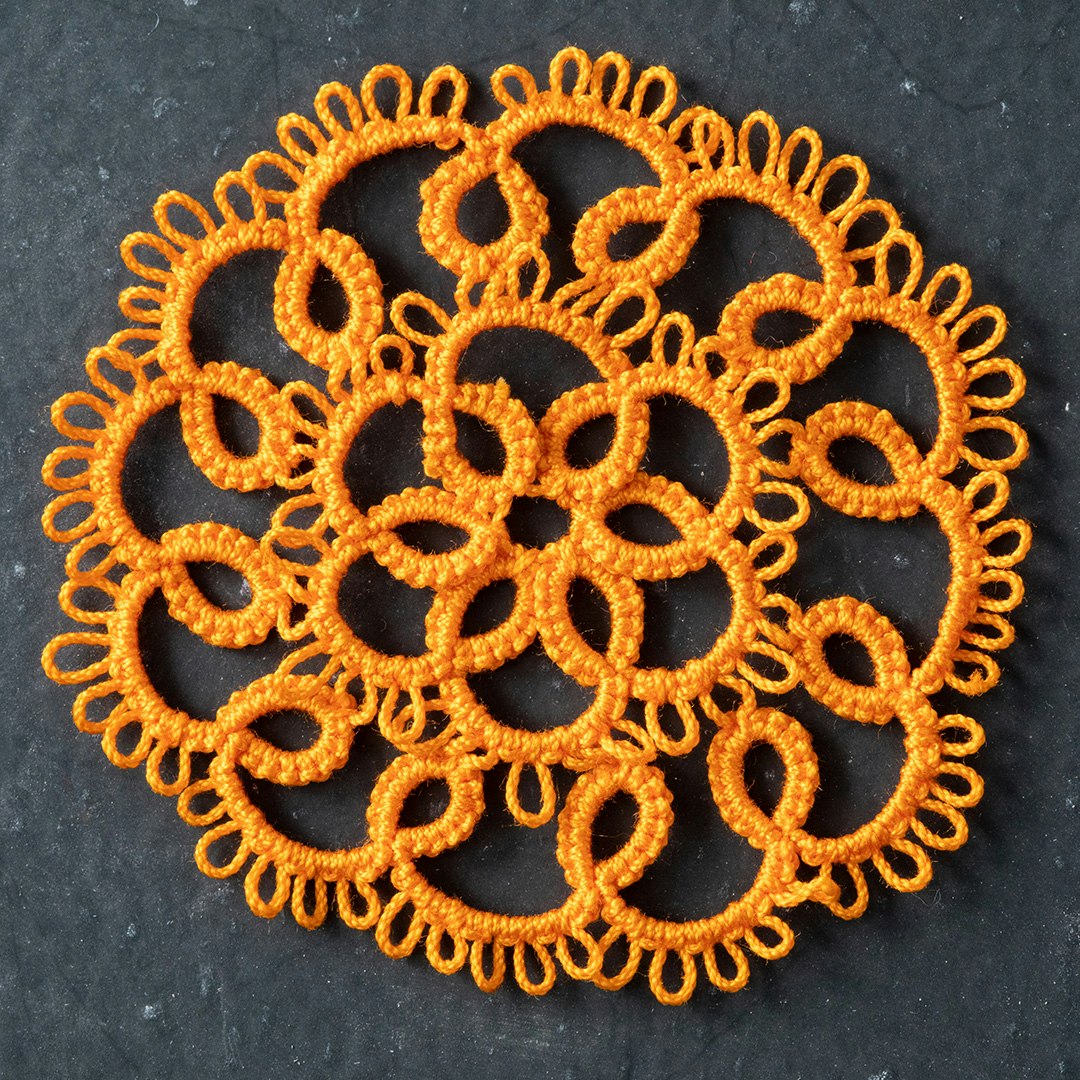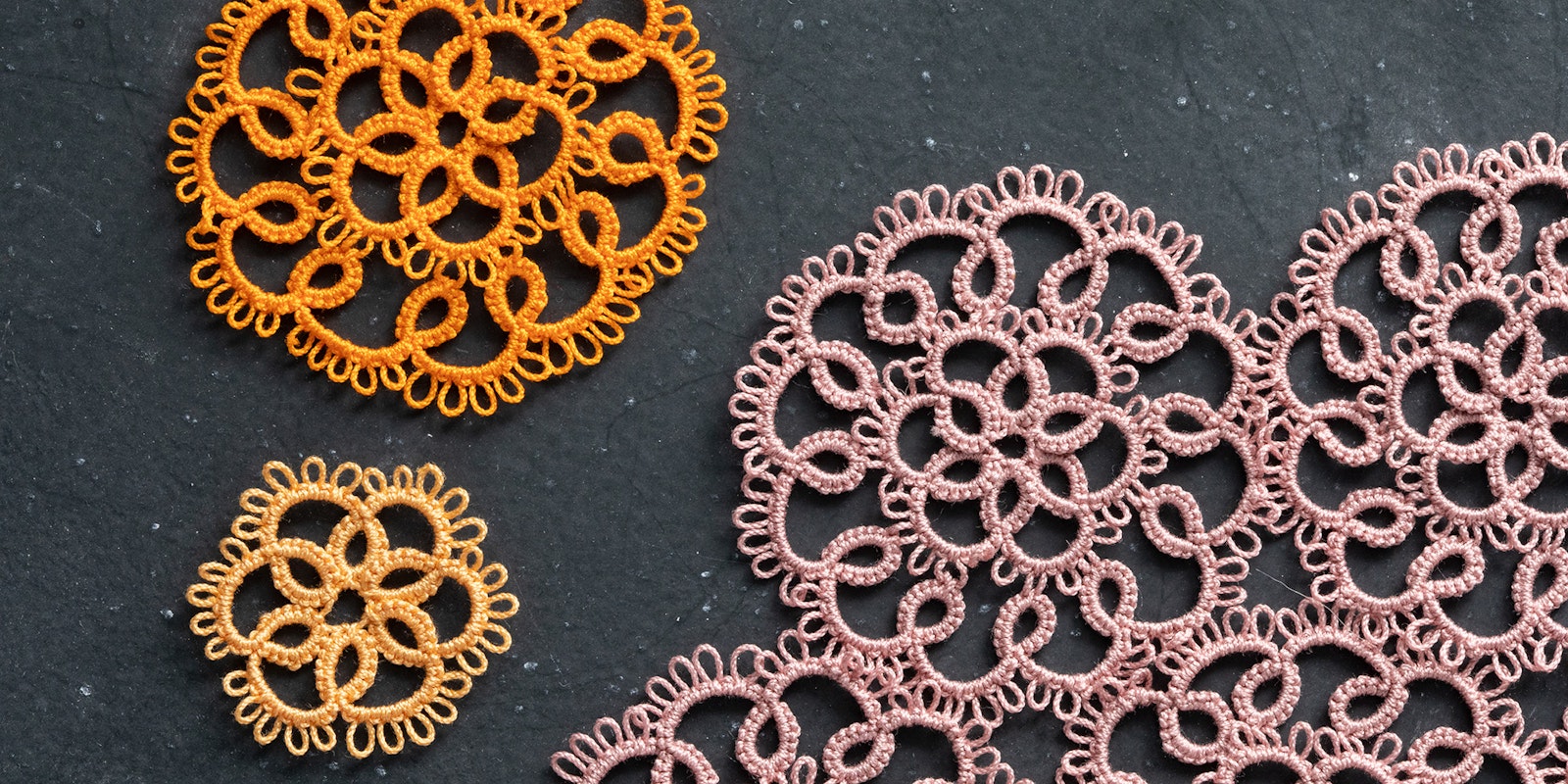As a student of life, I find it interesting to look back and see the changes in myself that have occurred over time. The outward expression evolves: a new pair of glasses, a different haircut, clothing choices made based on what event I am going to. These are all a part of me, yet the core remains the same. The same thing could also be said for crafts. The central idea of how to do something is the same but the way we share the ideas and translate the directions has changed over time.
The writing of tatting patterns is a case in point. For this particular piece from Weldon’s the instructions are written out and are available in the Fall 2022 issue. Luckily, we have a photograph to see what the finished object looks like. But how would these same instructions be shared in today’s format? Over time technology has changed. I would imagine getting a photo of a finished object in the 1800s was time consuming and costly. Now we all walk around with cell phones in our pockets and the capacity to take and share photos in an instant. This has turned us into a more visual society, understanding images at a glance rather than reading to ingest pattern information. Tatting patterns have followed suite with drawings and diagrams to follow. Another way this connects us is with a common language as the instructions have become images similar to reading a knitting chart. I have tatting books in Japanese (タッチング) and Polish (Frywolitki) with beautiful designs that are easy to understand because of the shift in expression to diagrams.

Left: Photo from Weldon’s of full antimascassar. Right: Modern illustration showing how tatting instructions are shared today. Illustration by Angela Schneider
Here is the Weldon’s pattern written in modern tatting language. The Japanese version of the pattern would show the diagram only and a photo of a shuttle and ball to illustrate that you would need one shuttle and the ball thread.
The diagram above is in the style of a Polish designer that I follow. She provides the diagram with one section marked with numbers for stitch counts and another section with items labeled with letters to show order of sequence.
Key
—: Long picot
-: Short picot
+: Join picot
Rnd 1: A: R 8–8
B: Ch 2-2-2-2-2-2
R 8+8
Ch 2-2-2-2-2-2
Rnd 2: A: R 8+8
B: Ch 2-2-2-2-2-2

Single motif of Weldon’s Antimascassar tatted by the author.
As you can see, the language is different, but the motif remains the same. Crafts—like people—may be the same at the core; however, they continually evolve and bring us together with new ways to share and express themselves.
Katrina King is the editorial assistant for Long Thread Media and a continuing student of craft and life.

